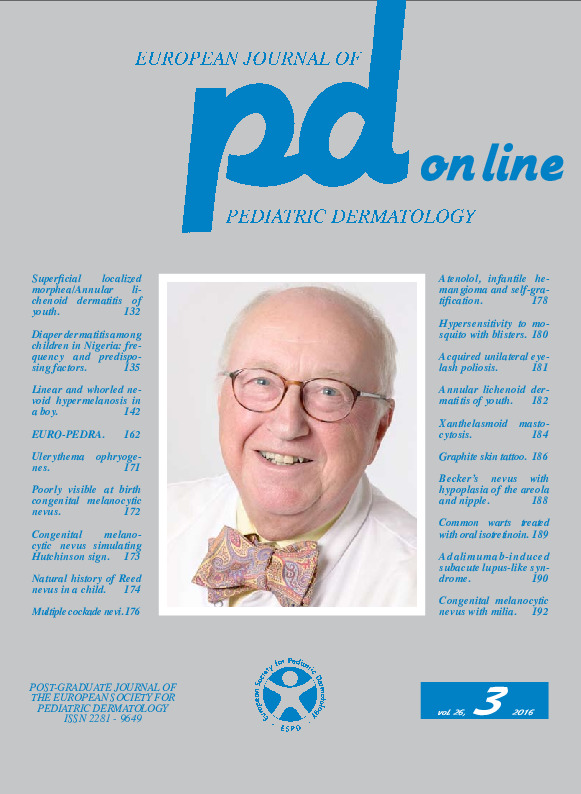Acquired unilateral eyelash poliosis in a child.
Downloads
DOI:
https://doi.org/10.26326/2281-9649.26.3.1262How to Cite
Jerkovic Gulin S., Chiriac A.E., Stolnicu S., Chiriac A. 2016. Acquired unilateral eyelash poliosis in a child. Eur. J. Pediat. Dermatol. 26 (3): 181. 10.26326/2281-9649.26.3.1262.
pp. 181
Abstract
Segmental vitiligo is the most frequent cause of acquired unilateral poliosis in children. However, at this age poliosis can be a distinct skin marker in some genetic syndromes as Alezzandrini syndrome, Marfan syndrome, NF1, prolidase deficiency, Tietze syndrome, tuberous sclerosis, Waardenburg syndrome, piebaldism; poliosis is also found in Vogt-Koyanagi-Harada disease (3). Exceptionally, eyelash poliosis was associated to retinal detachment (1) and congenital ectopia lentis et papillae (2). Most of these disorders were ruled out by genetic counselling and ophthalmological examination, leading to the probable diagnosis of segmental vitiligo. However, strangely enough eyelash poliosis was not associated with skin involvement and there was not a family history of autoimmune disorders leading to recommend close follow up.Keywords
Eyelash poliosis, Segmental vitiligo

